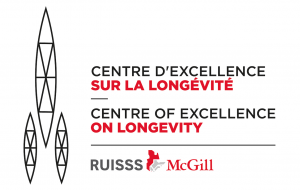Elderly emergency room users and age-related adverse outcomes: issues, challenges and perspectives with the “Emergency room evaluation and recommendations” (ER²) tool
Background
Emergency Rooms (ERs) across North America are under duress because of overcrowding, delays and diversions, whose increases can be exponential. The aging of Canada’s population amplifies the magnitude of this issue, as older ER users are the fastest increasing group of ER users and they possess complex and specific needs. Regardless the reason for an ER visit, multi-morbidities and disabilities tend to define older ER users. These two characteristics go a great way in explaining the pernicious age-related events which may arise during an ER visit, such as greater ER and hospital lengths of stays, and a higher hospital admission and in-hospital mortality rates, when compared to younger ER users. Because ERs are configured on a disease-oriented and episodic model, rather than chronic multi-morbidities and disabilities, the short-term adverse outcomes are one of the main challenges that they struggle with. Assessing the specific needs of the growing number of older ER users is a priority, if we wish to reduce the occurrence of the short-term age-related adverse ER outcomes.
The short-term adverse outcomes are relevant to rapid screening. Screening individuals presenting a high risk for short-term age-related adverse ER outcomes is, therefore, the first step to developing an effective ER care plan. However, the existing ER screening tools, such as the Identification of Seniors At Risk (ISAR) tool or the Triage Risk Screening Tool (TRST) used in Canadian ERs, or the “Programme de Recherche sur l’Intégration des Services pour le Maintien de l’Autonomie” (PRISMA-7), which is used in Quebec ERs, do not predict the short-term age-related adverse ER outcomes. We have developed a tool, known as “Emergency Room Evaluation and Recommendations” (ER²), which was specially designed to predict short-term age-related adverse ER outcomes. Its intended purpose is to improve screening of older ER users at risk of short-term age-related adverse ER outcomes, when compared to ISAR, TRST and PRISMA-7, with the aim to prevent the occurrence of these incomes, through delivering the right intervention, to the right patient, at the right time.
Evidence based medicine has shown that simple and early interventions throughout the care pathway may prevent delirium and motor deconditioning in older patients, and medication reconciliation is an efficient intervention to prevent adverse drug reactions. Furthermore, early assessment of home support is a crucial step to adapt home services to an early discharge to home.
Based on these evidences, we have improved ER² by adding an interventional facet to the assessment component. Interventional suggestions depend on the results of the assessment component, and feature recommended interventions aiming to prevent confusion, motor deconditioning, adverse drug reactions and inappropriate home support. These recommendations are formulated with the help of the answers to ER² questions. The effects of the ER² recommendations on age-related adverse ER outcomes have not yet been examined and, thus, need to be defined through a Randomized Controlled Trial (RCT).
Objectives
- To examine the usability of ER² in ER
- To examine the relationship between ER² risk stratification levels and incident short-term age-related adverse ER outcomes
- To compare the predictive value of ER² with existing ER screening tools
- To study the effects of ER² interventions on short-term age-related adverse ER outcomes
Prospect
A crucial breakthrough in terms of screening and care of older ER users.
Partners
Faculty of Medicine, McGill University
Emergency Department, Jewish General Hospital
Learn more
- “Emergency room evaluation and recommendations” (ER²): A pre-post interventional study
- Elderly ER patients and frailty: Feasibility of “Ed-Screener”
- Updating the brief geriatric assessment screening tool to 6 items for older inpatients at risk for long length of hospital stay: Results of prospective and observational cohort study



